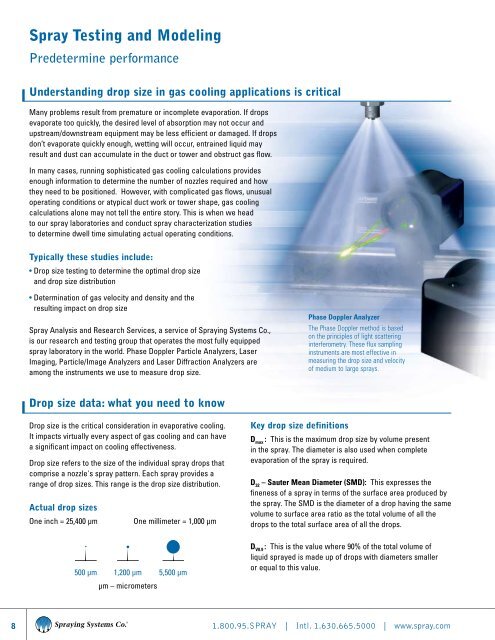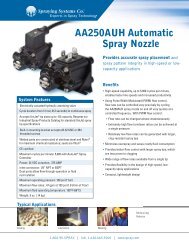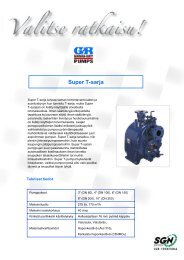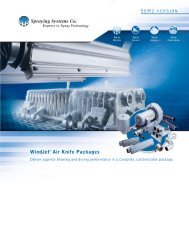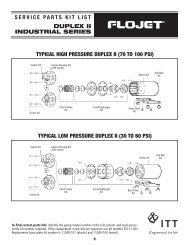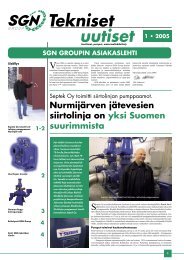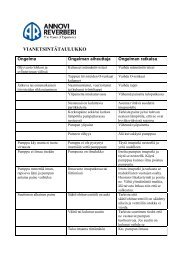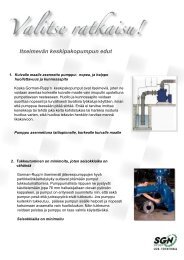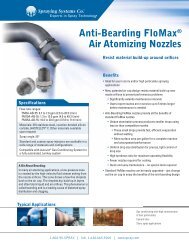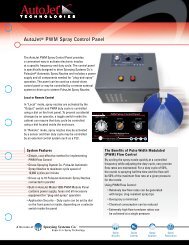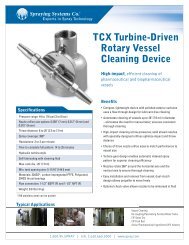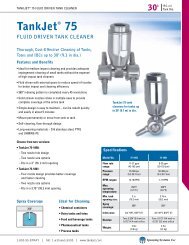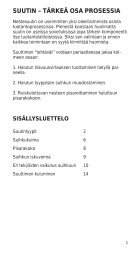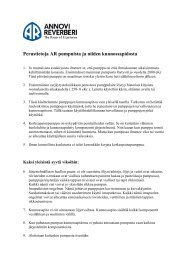Gas Cooling and Conditioning Guide - SGN Tekniikka Oy
Gas Cooling and Conditioning Guide - SGN Tekniikka Oy
Gas Cooling and Conditioning Guide - SGN Tekniikka Oy
You also want an ePaper? Increase the reach of your titles
YUMPU automatically turns print PDFs into web optimized ePapers that Google loves.
Spray Testing <strong>and</strong> ModelingPredetermine performanceUnderst<strong>and</strong>ing drop size in gas cooling applications is criticalMany problems result from premature or incomplete evaporation. If dropsevaporate too quickly, the desired level of absorption may not occur <strong>and</strong>upstream/downstream equipment may be less efficient or damaged. If dropsdon’t evaporate quickly enough, wetting will occur, entrained liquid mayresult <strong>and</strong> dust can accumulate in the duct or tower <strong>and</strong> obstruct gas flow.In many cases, running sophisticated gas cooling calculations providesenough information to determine the number of nozzles required <strong>and</strong> howthey need to be positioned. However, with complicated gas flows, unusualoperating conditions or atypical duct work or tower shape, gas coolingcalculations alone may not tell the entire story. This is when we headto our spray laboratories <strong>and</strong> conduct spray characterization studiesto determine dwell time simulating actual operating conditions.Typically these studies include:• Drop size testing to determine the optimal drop size<strong>and</strong> drop size distribution• Determination of gas velocity <strong>and</strong> density <strong>and</strong> theresulting impact on drop sizeSpray Analysis <strong>and</strong> Research Services, a service of Spraying Systems Co.,is our research <strong>and</strong> testing group that operates the most fully equippedspray laboratory in the world. Phase Doppler Particle Analyzers, LaserImaging, Particle/Image Analyzers <strong>and</strong> Laser Diffraction Analyzers areamong the instruments we use to measure drop size.Phase Doppler AnalyzerThe Phase Doppler method is basedon the principles of light scatteringinterferometry. These flux samplinginstruments are most effective inmeasuring the drop size <strong>and</strong> velocityof medium to large sprays.Drop size data: what you need to knowDrop size is the critical consideration in evaporative cooling.It impacts virtually every aspect of gas cooling <strong>and</strong> can havea significant impact on cooling effectiveness.Drop size refers to the size of the individual spray drops thatcomprise a nozzle's spray pattern. Each spray provides arange of drop sizes. This range is the drop size distribution.Actual drop sizesOne inch = 25,400 µm One millimeter = 1,000 µmKey drop size definitionsD max : This is the maximum drop size by volume presentin the spray. The diameter is also used when completeevaporation of the spray is required.D 32 – Sauter Mean Diameter (SMD): This expresses thefineness of a spray in terms of the surface area produced bythe spray. The SMD is the diameter of a drop having the samevolume to surface area ratio as the total volume of all thedrops to the total surface area of all the drops.500 µm 1,200 µm 5,500 µmµm – micrometersD V0.9 : This is the value where 90% of the total volume ofliquid sprayed is made up of drops with diameters smalleror equal to this value.1.800.95.SPRAY | Intl. 1.630.665.5000 | www.spray.com


